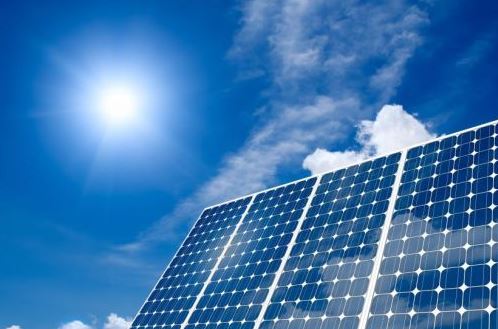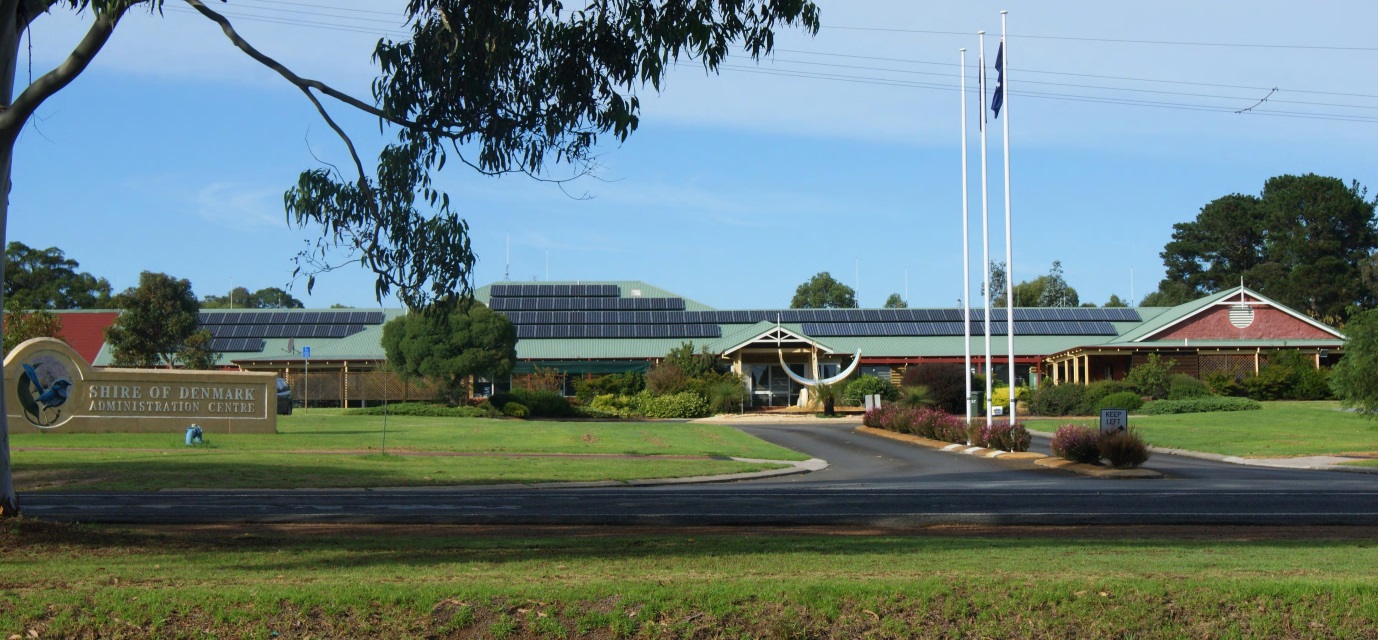Power Project
The Shire of Denmark has committed to net-zero target green house gas emissions by 2050. In order to consume electrical energy with net-zero emissions this can be achieved by installing additional behind-the-meter photovoltaic (PV) generation sufficient to achieve an annual net-zero energy balance and/or contract from external renewable generation.
The Power Project's first stage is to reduce the organisation's dependence on external generation by installing photovoltaics (PV's). A typical approach to PV installation is to match daytime use. However, this approach would limit the project's success in missing the opportunity of existing roof space and requiring reliance on external generation for a significant load requirement outside of effective PV generation times.
It is proposed to maximise the Shire’s PV opportunity by managing the energy balancing of timing mismatches between self-generation and loads with local energy storage.
Future stages would look to incorporate non-contestable supplies by including enough behind-the-meter PV to be eligible to enter the Wholesale Energy Market (WEM).
The final stage would be to purchase any shortfall via external renewable generation.

Energy Consumption and Costs – Performance of the Shire’s Assets
The Shire of Denmark subscribes to Azility's environmental scorekeeper service, which works with the Shire and utility providers to collect and report the energy and water performance data for the Shire’s assets. The subscription allows the Shire to proactively manage its energy and water consumption and costs to make quick decisions, identify basic performance problems and opportunities to improve performance. Although not mandated by legislation, the aim is to expand the reporting to include greenhouse gas emissions and setting of targets.
Annual energy performance data (from 2012-2013) can be found in the Shire's Annual reports at http://www.denmark.wa.gov.au/documents/?categoryId=40.
Solar Panels on Shire Administration Building
Energy efficiency measures and a significant upgrade to the existing solar panel at the Shire of Denmark administration building has dramatically reduced the annual operating costs and added to Denmark’s long term sustainability. With costs associated with energy significantly rising and predicted to consistently rise into the future, the motivation was to save money via the new renewable and energy efficiency measures whilst also reducing the organisation’s carbon footprint to address climate change at a local level.
In December 2012, Great Southern Solar, a local Denmark business, was awarded a contract to expand the existing solar panel array from 6 to 32.5 Kilowatts. The intended outcome from this expansion was to remove the administration building’s dependence on the regional electricity grid through generating 117 Kilowatt hours of energy per day through the solar system. It is also intended to provide a backup for the computer servers in the building via the battery energy storage system.

Implementing recommendations from an energy audit undertaken for the administration building also meaningfully added to carbon and energy efficiency benefits from the solar panel expansion. There are significant energy and financial savings that can be realised through identifying and acting upon simple, immediately achievable actions. The old adage of getting at ‘the low hanging fruit’ first and foremost gives great results. Acting upon the low hanging fruit can realise, on average, an easily achievable 10- 20% energy efficiency gain for most organisations and homes, with minimal financial investment.
Simple energy efficiency improvement measures implemented within the administration building have included replacing old lighting with LED technology as a part of ongoing maintenance, and increasing roof cavity insulation to improve thermal performance of the building with minimal investment. Another key measure was to set the cooling temperature of the air conditioning to 23 degrees that will significantly reduce energy requirements over summer.
Questions Frequently Asked About the Administration Building’s Solar PV Panels
How many new solar photovoltaic (PV) panels were added to the Administration building? 110
What is the total number of panels now at the Administration building? 140 (30 were installed in 2009).
How much power is generated by the new integrated system? 32.5 kW in bright sunshine (upgraded from 6kW)
What is the estimated savings in electricity charges? Approximately $13,500 per year (this figure will increase as electricity charges per unit increase).
What is the cost of a Panel upgrade? $75,000
How long did the actual construction of the expanded solar PV take? Three weeks
How effective is a solar system in terms of value for money? The return on the investment is equivalent to 15% interest, which means that there is return on capital investment of 100% over 6 years for the Administration building upgrade.
What are the benefits of installing a solar PV energy system? Reduced costs of running the Shire Administration building, reduced carbon footprint, limiting the impact of future electricity price rises and access cheaper grid power.
How does a solar PV system work / operate? Sunlight hitting the panels is converted into electricity which is in turn converted into 240 volt AC by a bank of inverters ready for use by the Shire.
Why did the Shire of Denmark choose to expand its Solar PV system? It was a good financial investment and demonstrated the Shire’s commitment to reducing its greenhouse gas emissions.
Are solar systems effective during winter? Yes, the system will produce about half of the summer peak in winter. This is due to the premium technology solar panels that have been used in the system.
What is the projected output of energy from the new solar PV system? Allowing for Denmark weather patterns, the average energy output is predicted to be 117 units/day.
Will the system produce more power than the Shire uses? The system will produce excess power on the weekends due to lower consumption by the building when vacant. This power is fed back to the Western Power network.
Why does the solar power output vary so much? The power output is dependent upon level of sunlight intensity, ambient temperature and even high level cloud. The average output takes all this variation into account.
Is the system producing as much as expected? The system has been operating since December 2012 and produces an average of 112 units/day. This is very close to the output expected.
Zero Carbon Energy Website links
Switch the Future energy saving tips
Sustainability in the home resources
Australian Government guide to building, buying or renovating environmentally sustainable homes
Climate change in Australia